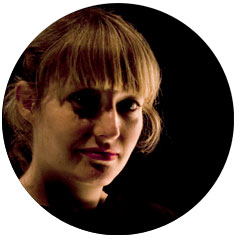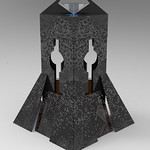PUBLICATIONS
TRANSFORMATIVE ENCOUNTERS AND UNCANNY INTIMACIES: BIOTECHNOLOGY AND CONTEMPORARY ART – A PRACTITIONER’S APPROACH AND PERSPECTIVE
Somatechnics, Volume 2, Issue 2, 2012
Pages 263-283
ABSTRACT
Presented from an ArtScience practitioner’s perspective, this paper provides an overview of Svenja Kratz’s experience working as an artist within the area of cell and tissue culture at QUT’s Institute of Health and Biomedical Innovation (IHBI). Using The Absence of Alice, a multi-medium exhibition based on the experience of culturing cells, as a case study, the paper gives insight into the artist’s approach to working across art and science and how ideas, processes, and languages from each discipline can intermesh and extend the possibilities of each system. The paper also provides an overview of her most recent artwork, The Human Skin Equivalent/Experience (HSE) Project, which involves the creation of personal jewellery items incorporating human skin equivalent models grown from the artist’s skin and participant cells. Referencing this project, and other contemporary bioart works, the value of ArtScience is discussed, focusing in particular on the way in which cross-art-science projects enable an alternative voice to enter into scientific dialogues and have the potential to yield outcomes valuable to both disciplines.
TRANSFORMATIVE TRANSGRESSIONS: BIOTECHNOLOGY, PERSONAL EXPERIENCE, ETHICS AND ART
Svenja Kratz
Second Nature: International Journal of Creative Media, Volume 2, 2010
Pages 222-251
ABSTRACT
This paper provides a basic background of the emerging discipline of bioart and the primary ethical issues that the manipulation of living organisms and use of biotechnologies for art production provokes. Giving examples from personal experience as an arts/science practitioner working within the field of cell and tissue culture, the primary discussion centres on the messy and experiential dimension of bioart ethics and the way in which personal values and experiences affect research approaches and project concepts. The logistical problems involved in exhibiting and obtaining ethical clearance for art/science projects are also addressed.
BECOMINGS: RHIZOME METHODOLOGIES AND THE BODY-IN-PROCESS
Haya Cohen and Svenja Kratz
Australasian Journal of ArtsHealth, Volume 1, 2009
Pages 90-105
ABSTRACT
Drawing on research in biology and neuroscience by scientists such as Antonio Damasio, and informed by the theoretical investigations of philosophers such as Gilles Deleuze and feminist theorist Rosi Braidotti, we discuss the different possibilities that contemporary arts practice offers for performing, representing, thinking about and revealing the body. In this paper the intersections of research on the body which occurs across the arts, sciences and humanities are focused through two practice-based research projects: Textiled Becomings — a living fibre work by Haya Cohen; and The Absence of Alice — a multi-medium bioart installation by Svenja Kratz.








